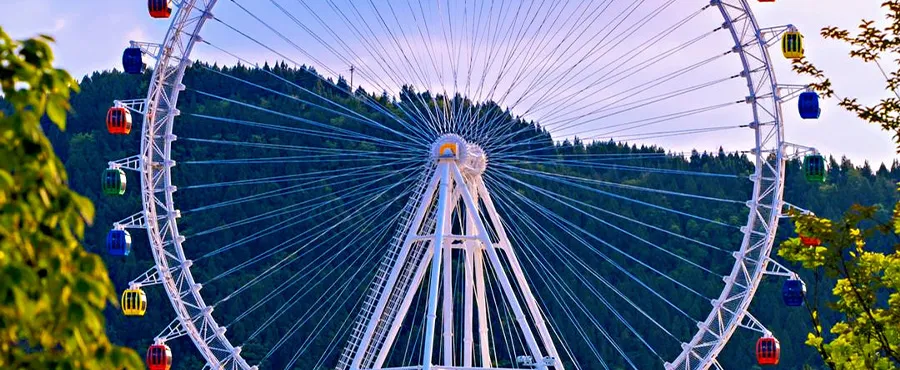- Albanian
- Arabic
- Belarusian
- Bengali
- Czech
- English
- French
- German
- Hebrew
- Hungarian
- Indonesian
- irish
- Italian
- Japanese
- kazakh
- Persian
- Russian
- Thai
- Uzbek
- Vietnamese
Exploring the Insights of the Observation Wheel for Enhanced Understanding
The Observation Wheel A Modern Marvel of Engineering and Experience
The observation wheel, often referred to as a giant Ferris wheel, is one of the most recognizable attractions in amusement parks and cityscapes around the world. Towering high above the ground, these magnificent structures not only provide breathtaking views but also represent a significant achievement in engineering and design. This article explores the history, construction, and cultural impact of observation wheels, as well as the unique experiences they offer to visitors.
A Glimpse into History
The concept of a Ferris wheel was first brought to life in 1893 by George Washington Gale Ferris Jr. during the World’s Columbian Exposition in Chicago. The original Ferris wheel stood at an impressive height of 264 feet and was a symbol of American ingenuity, showcasing the capabilities of steel as a building material. Since then, observation wheels have evolved in design and technology, with some of the modern builds reaching heights of over 600 feet.
Engineering Marvels
Constructing an observation wheel is no small feat. Engineers must carefully consider numerous factors, including structural integrity, safety, and aesthetics. The materials used typically involve high-strength steel and glass, ensuring both durability and a clear view for passengers. The wheel's rotation mechanism must also be meticulously designed to provide a smooth and enjoyable experience.
One of the largest observation wheels in the world, the High Roller in Las Vegas, stands at a staggering 550 feet. This engineering marvel is supported by a central hub and is balanced with meticulous precision to ensure that riders experience a seamless rotation. The integration of advanced technology has allowed observation wheels to incorporate features such as climate-controlled cabins, interactive lighting, and even multimedia presentations.
Cultural Significance
the observation wheel

The observation wheel has transcended its initial purpose of amusement, becoming iconic symbols of the cities that house them. For instance, the London Eye has become synonymous with the city of London, attracting millions of tourists each year. It offers panoramic views of the River Thames and the sprawling urban landscape, providing a unique perspective that is both exhilarating and serene.
These wheels also play a role in cultural events, as they are often adorned with lights and decorations during holidays and special occasions. This transforms them into focal points within city skylines, promoting a sense of community and celebration. For instancr, during New Year's Eve, the London Eye is a centerpiece of the city's fireworks display, drawing attention from around the globe.
The Experience of Riding
Riding an observation wheel is an experience that transcends age and background. As passengers ascend, anticipation builds, and the world below gradually unfolds into a stunning panorama. For many, the experience is heightened by the conversations shared, the laughter that ripples through the cabin, and the awe inspired by the views.
Modern observation wheels often include features designed to enhance the riding experience. Many cabins offer glass floors or interactive displays that provide information about landmarks visible from the wheel. Some even offer fine dining options, turning a simple ride into a memorable culinary adventure.
Conclusion
The observation wheel is more than just an amusement ride; it is a celebration of engineering brilliance, cultural significance, and shared human experience. As cities continue to embrace these towering structures, they not only beautify skylines but also create opportunities for connection, reflection, and joy among visitors. The next time you find yourself near an observation wheel, take a moment to appreciate the history and innovation behind it, and allow yourself to be immersed in the breathtaking views and experiences it offers. Riding an observation wheel is a chance to pause, reflect, and take in the world from a new perspective, reminding us of the beauty and complexity of the environments we inhabit.
-
Flume Ride-Hebei Zhipao Amusement Equipment Manufacturing Co., Ltd.|Thrilling Water Attraction&Customizable DesignJul.30,2025
-
Flume Ride - Hebei Zhipao Amusement Equipment | Water Coaster, Thrilling DescentJul.30,2025
-
Flume Ride - Hebei Zhipao | Thrilling Water AttractionJul.30,2025
-
Flume Ride: Thrilling Water Attraction by Hebei Zhipao|Log Flume Manufacturers&Flume Ride DesignJul.30,2025
-
Flume Ride-Hebei Zhipao Amusement Equipment Manufacturing Co., Ltd.|Thrilling Water Coaster, Safe DesignJul.30,2025
-
Flume Ride-Hebei Zhipao Amusement Equipment Manufacturing Co., Ltd.|Thrilling Water Attraction, Safe DesignJul.30,2025
